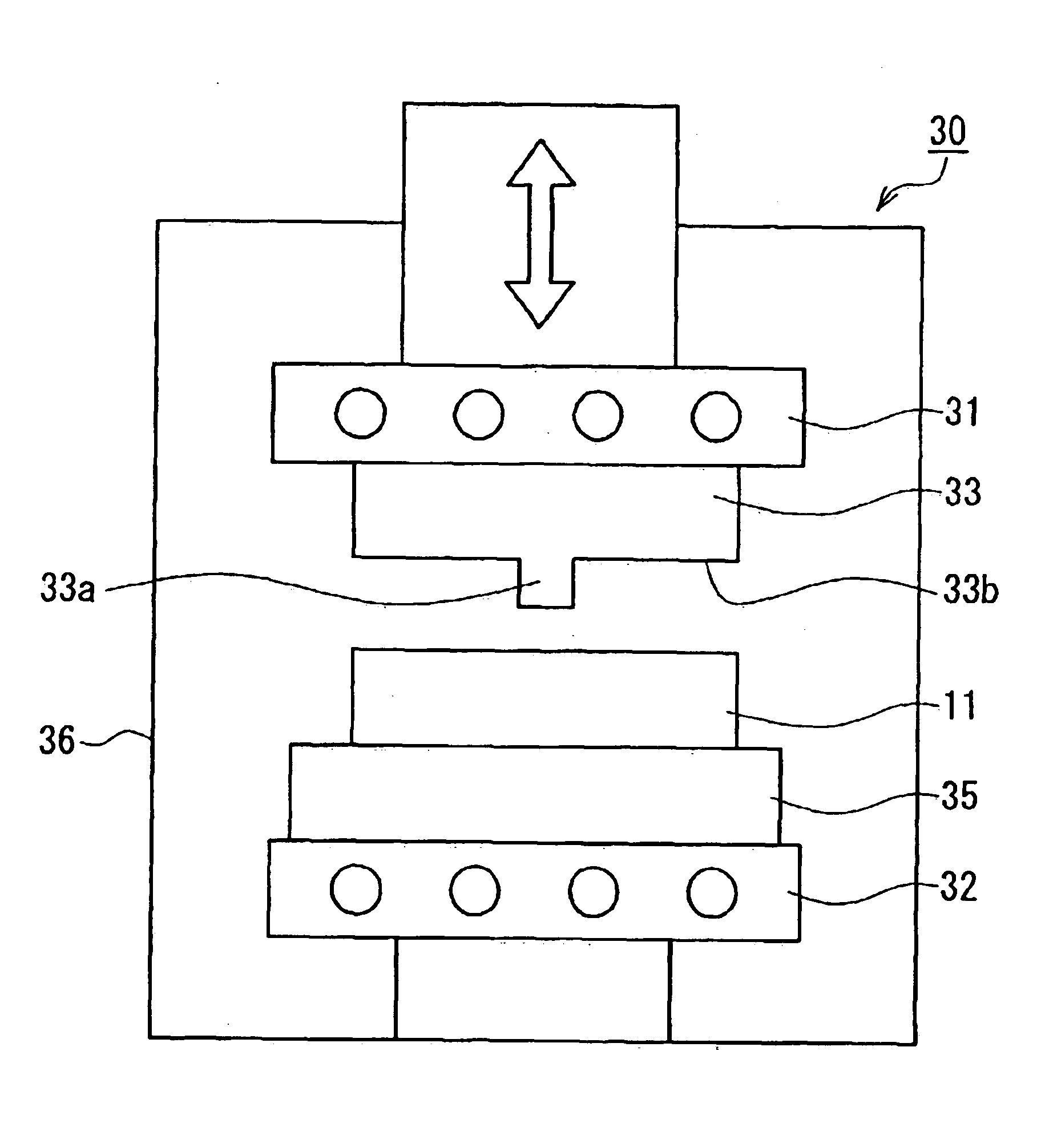Optical waveguide and method for manufacturing the same
- Summary
- Abstract
- Description
- Claims
- Application Information
AI Technical Summary
Benefits of technology
Problems solved by technology
Method used
Image
Examples
embodiment 1
An optical waveguide of Embodiment 1 of the present invention will be described with reference to the drawings. FIG. 1 is a cross-sectional view showing the configuration of an optical waveguide 1. As shown in FIG. 1, the optical waveguide 1 includes a core 13 and glass substrates (claddings) 11, 12 that surround the core 13. A guided optical wave is trapped and propagated in the core 13.
The core 13 is embedded in the glass substrate 11 so as to be exposed on the principal surface of the glass substrate 11 that is opposed to the glass substrate 12. The glass substrates 11, 12 are arranged so as to sandwich the core 13. The glass substrates 11, 12 can be made of the same material.
A product formed, e.g., by heating a polymeric material that includes branched polysilane and polysiloxane is used as the core 13. The cross section of the core 13 is, e.g., 8 μm square. It is preferable that a relative refractive index difference between the core 13 and the glass substrates (claddings) 11, ...
embodiment 2
An optical waveguide of Embodiment 2 of the present invention will be described with reference to the drawings. FIG. 4 is a cross-sectional view showing the configuration of an optical waveguide 4. As shown in FIG. 4, the optical waveguide 4 includes a core 43, glass substrates (claddings) 41, 42 that surround the core 43, and an adhesive layer 44. A guided optical wave is trapped and propagated in the core 43.
The core 43 is embedded in the glass substrate 41 so as to be exposed on the principal surface of the glass substrate 41 that is opposed to the glass substrate 42. The glass substrates 41, 42 are arranged so as to sandwich the core 43 via the adhesive layer 44. The glass substrates 41, 42 can be made of the same material. The refractive index of the adhesive layer 44 can be the same as the refractive indices of the glass substrates 41, 42.
A product formed, e.g., by heating a polymeric material that includes branched polysilane and polysiloxane is used as the core 43. The cross...
embodiment 3
An optical waveguide of Embodiment 3 of the present invention will be described with reference to the drawings. FIG. 7 is a cross-sectional view showing the configuration of an optical waveguide 7. As shown in FIG. 7, the optical waveguide 7 includes a core 73, glass substrates (claddings) 71, 72 that surround the core 73, and an adhesive layer 73a. The adhesive layer 73a is combined with the core 73 and formed between the glass substrates 71, 72. A guided optical wave is trapped and propagated in the core 73.
The core 73 is embedded in the glass substrate 71 so as to be exposed on the principal surface of the glass substrate 71 that is opposed to the glass substrate 72. The glass substrates 71, 72 are arranged so as to sandwich the core 73 via the adhesive layer 73a. The glass substrates 71, 72 can be made of the same material. The adhesive layer 73a and the core 73 are formed into a single component.
A product formed, e.g., by heating a polymeric material that includes branched poly...
PUM
 Login to View More
Login to View More Abstract
Description
Claims
Application Information
 Login to View More
Login to View More - R&D
- Intellectual Property
- Life Sciences
- Materials
- Tech Scout
- Unparalleled Data Quality
- Higher Quality Content
- 60% Fewer Hallucinations
Browse by: Latest US Patents, China's latest patents, Technical Efficacy Thesaurus, Application Domain, Technology Topic, Popular Technical Reports.
© 2025 PatSnap. All rights reserved.Legal|Privacy policy|Modern Slavery Act Transparency Statement|Sitemap|About US| Contact US: help@patsnap.com



